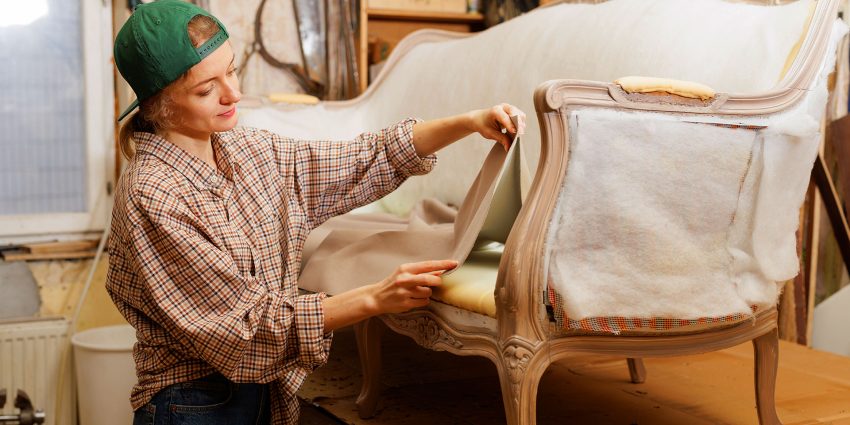Upholstery is about more than what you see. Before the fabric stretches. Before the webbing tightens. Before the first staple is set, decisions are already being made that will determine whether the job holds strong or falls apart.
And here’s the harsh truth: many upholstery failures have nothing to do with technique. They happen before the real work even starts.
They begin with poor planning. Or worse, poor tools.
The Wrong Tools Invite the Wrong Results
Let’s be honest, your hands can only do so much. They need the right support. The wrong tools don’t just slow you down, they compromise the job itself.
- A dull blade tears instead of slicing
- A cheap regulator can’t shape stuffing with accuracy
- A staple remover slips and damages the frame
- An ill-fitting tack hammer splits more than it sets
Start your project with weak tools, and you’re already building on shaky ground.
Skipping the Prep Means Skipping the Finish
We’ve all been tempted to dive in, rip off the old fabric, grab the nearest staple gun, and “make it work.” But upholstery doesn’t reward speed over sequence.
Prep isn’t optional. It’s foundational.
- Is the frame solid?
- Is the padding clean and even?
- Are the webbing and springs properly placed and tensioned?
Neglect these steps, and even the finest fabric and tightest stitching won’t save the final piece. What’s beneath the surface will always find a way to show itself.
Lack of Precision Leads to Cascade Failure
Precision in upholstery isn’t just about aesthetics, it’s about structure. When one cut is off, the rest begin to follow.
Start with uneven measurements? You’ll end up with puckered seams. Misplace the first tack? The whole alignment shifts. It’s a domino effect.
And the tools you use are part of that precision equation. You can’t expect accuracy from gear that wobbles, bends, or slips.
One-Size-Fits-All Tools Rarely Fit Upholstery Work
You might be tempted to use that old screwdriver as a lifter, or a household hammer to drive in decorative nails. But upholstery has its own language, and its own tools for a reason.
Tools designed for the job bring finesse. They’re shaped for tight corners, curved edges, layered materials. They give you control without the guesswork.
Trying to “make do” with general tools is one of the quickest ways to start an upholstery job with failure already baked in.
Conclusion
A great upholstery job doesn’t begin when the fabric is rolled out; it begins at the bench. With solid prep. With the right tools. With a mindset that respects the process from the inside out.
Because in this craft, shortcuts aren’t just risky, they’re visible. Every mistake shows up eventually.
So before the next job begins, check your tools, check your prep, and build your foundation like it matters. Because it absolutely does.

